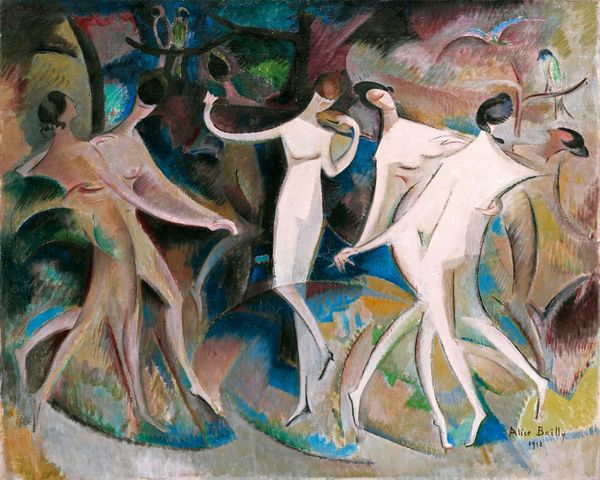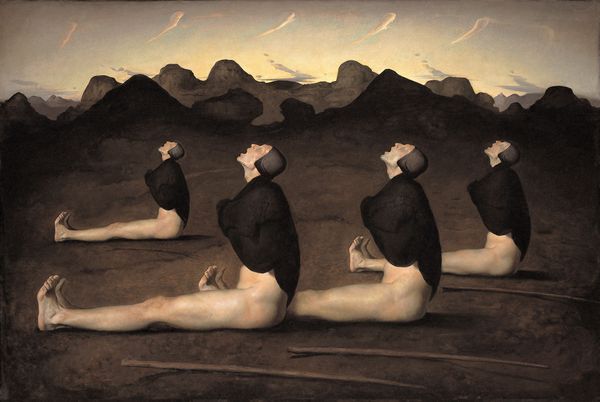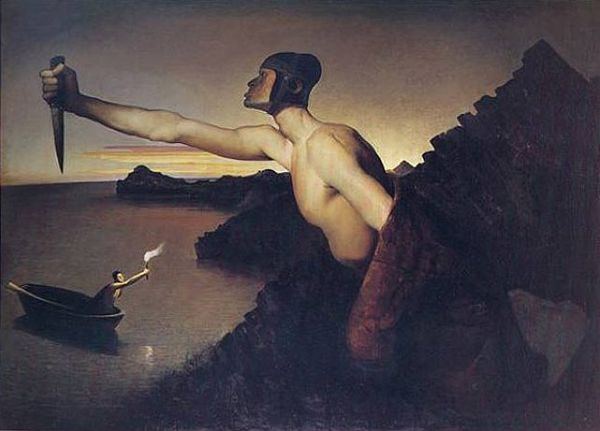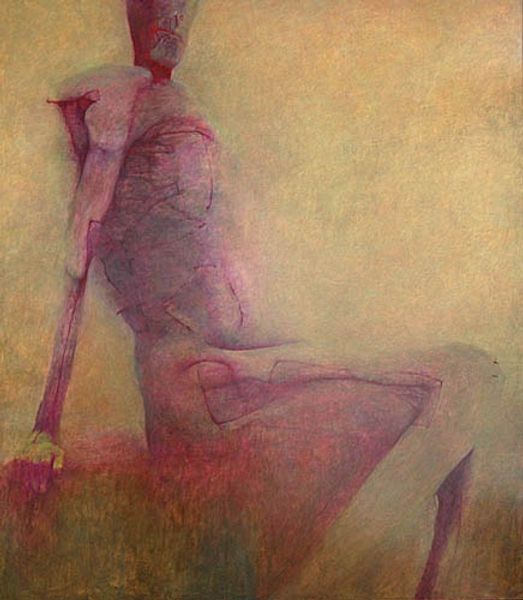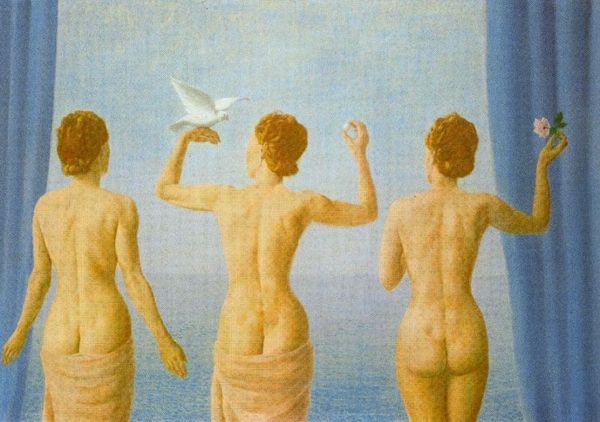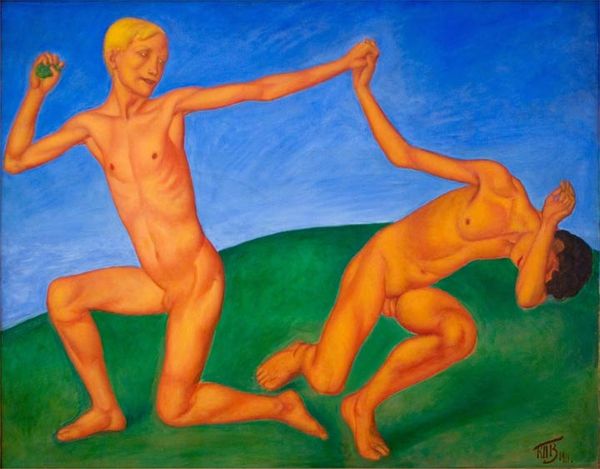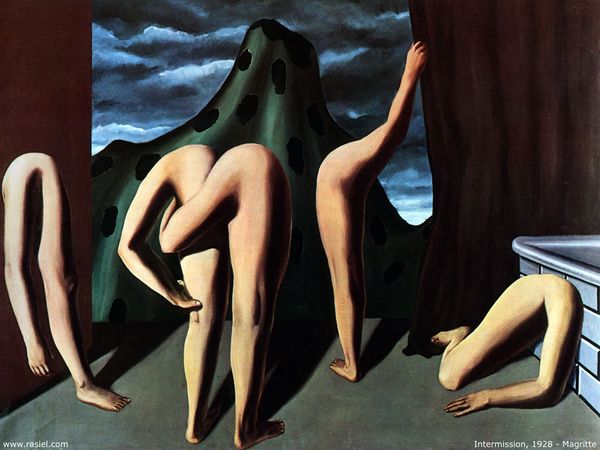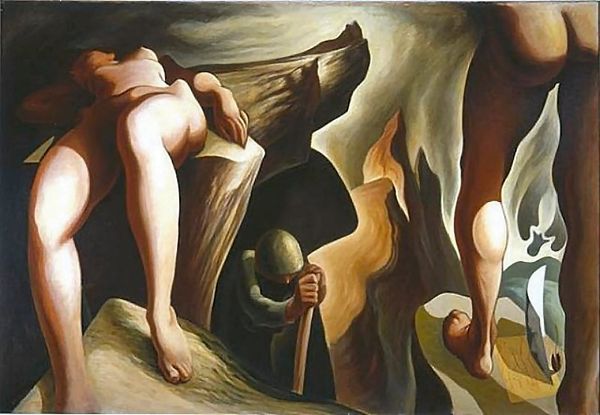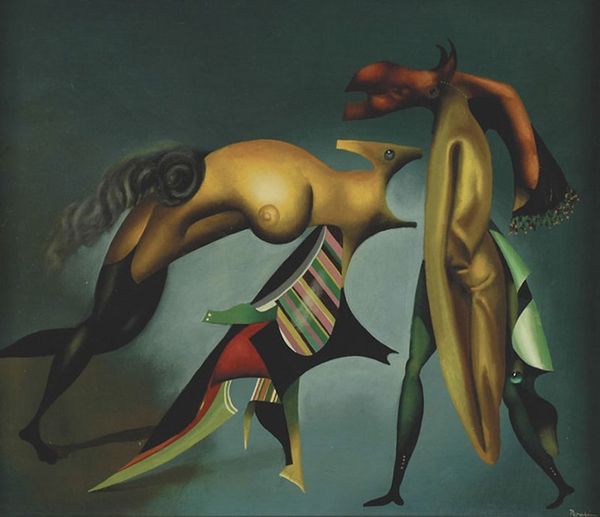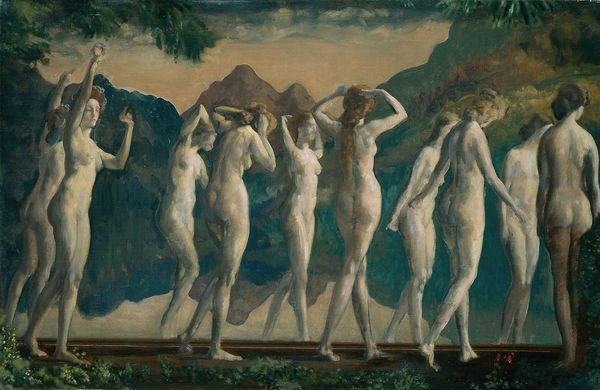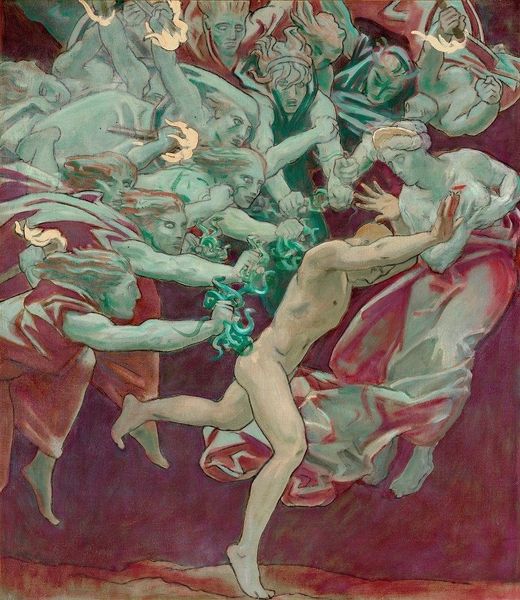
painting, oil-paint
#
portrait
#
narrative-art
#
painting
#
oil-paint
#
landscape
#
charcoal drawing
#
figuration
#
neo expressionist
#
neo-expressionism
#
expressionism
#
charcoal
#
expressionist
#
self portrait
Copyright: Displayed with the permission of the Nerdrum Museum (http://nerdrummuseum.com)
Curator: Gazing upon this oil painting entitled "The Singers," one is immediately struck by its somber palette. A trio of figures, seemingly caught mid-stride, dominate the scene beneath a stark, looming sky. What feelings does its composition stir within you? Editor: Initially, a sense of unease. The figures, repeated and slightly offset, coupled with the drab, almost desolate landscape evoke a feeling of anxiety, perhaps a silent scream echoing across the canvas. The heavy impasto amplifies this stark, desolate impression. Curator: Quite right. Note the use of chiaroscuro, the stark contrast between light and shadow. Nerdrum masterfully employs this to highlight the figures' expressive faces and limbs, imbuing them with a raw emotional intensity, which pulls focus from the otherwise barren land. The mountains in the background also evoke Romantic landscapes, yet the feeling is one of distress rather than awe. Editor: Exactly. It brings to mind the post-war angst so common during the neo-expressionist movement. I wonder about the public reception. Did viewers then find it unsettling or strangely cathartic during a time of increasing tension? One wonders how institutional forces shaped this perspective. Curator: Consider how Nerdrum rejects prevailing postmodern trends in his dedication to figuration and narrative. He identifies as a "kitsch painter," a term he uses to distance himself from what he perceives as the cynicism and irony of contemporary art institutions, explicitly addressing a primal and universal emotional core. Note the faces themselves – their mouths agape, creating powerful semiotic signifiers, the open mouth. Editor: An intentional provocation then, through the very language of form and figure! It begs the question: what statements are we allowed to make in different periods in the context of cultural institutions? Curator: Perhaps the real power lies in that open-ended question. A perfect note to close on, inviting deeper exploration of the political dimensions of Nerdrum's practice, wouldn’t you agree? Editor: Absolutely. Art always serves as both the symptom and critique of society. I leave with an image haunting, as this artwork forces me to face its darkness while challenging conventional historical frames of the period.
Comments
No comments
Be the first to comment and join the conversation on the ultimate creative platform.

